Related Research Articles

The New Scooby-Doo Movies is an American animated mystery comedy television series produced by Hanna-Barbera for CBS. It is the second television series in the Scooby-Doo franchise, and follows the first incarnation, Scooby-Doo, Where Are You! It premiered on September 9, 1972, and ended on October 27, 1973, running for two seasons on CBS as the only hour-long Scooby-Doo series. Twenty-four episodes were produced, sixteen for the 1972–73 season and eight more for the 1973–74 season.

The Funky Phantom is an animated television series, produced by Hanna-Barbera Productions, in association with Australian production company Air Programs International for the American Broadcasting Company (ABC). The show was a clone of Hanna-Barbera's popular Scooby-Doo, Where Are You!, with a trio of teenage detectives driving around the country and solving crimes. In this case, the "Scooby-Doo" role was taken by a Revolutionary War-era ghost, voiced by Daws Butler in a manner almost identical to that of Snagglepuss.

Sunday Go to Meetin' Time is a 1936 Warner Bros. Merrie Melodies cartoon directed by Friz Freleng. The short was released on August 8, 1936. The name of the short comes from the colloquial adjective "sunday-go-to-meeting", describing something appropriate for church or otherwise presentable.
Puppetoons is a series of animated puppet films made in Europe (1930s) and in the United States (1940s) by George Pal. They were made using replacement animation: using a series of different hand-carved wooden puppets for each frame in which the puppet moves or changes expression, rather than moving a single puppet, as is the case with most stop motion puppet animation. They were particularly made from 1932-1948, in both Europe and the US.
The Midnight Snack is a Tom and Jerry cartoon released on July 19, 1941. It is the second of the Tom and Jerry films, returning to the basic premise of the previous film, Puss Gets the Boot, following that cartoon's Academy Awards nomination.
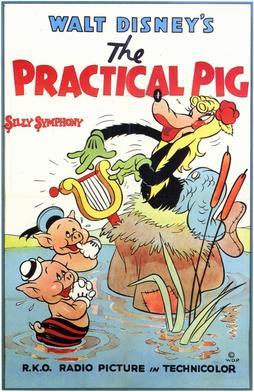
The Practical Pig is a Silly Symphony cartoon. It was released on February 24, 1939, and directed by Dick Rickard. It was the fourth and final cartoon starring The Three Pigs. Like its predecessors, The Practical Pig incorporates the song "Who's Afraid of the Big Bad Wolf?". Unlike its predecessors however, its title cards labeled it as a standalone Three Little Pigs cartoon, suggesting that they were to get their own series of cartoons. It is also the second-to-last Silly Symphony cartoon.

Dallas Raymond McKennon, sometimes credited as Dal McKennon, was an American actor. He had a career lasting over 50 years.
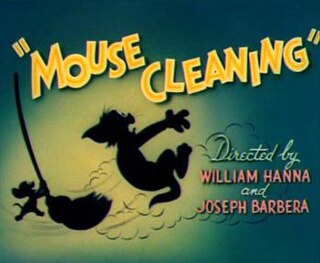
Mouse Cleaning is a 1948 one-reel animated cartoon and the 38th Tom and Jerry short. The title is a play on "house cleaning". It was produced in Technicolor and released to theatres on December 11, 1948, by Metro-Goldwyn Mayer and again on February 18, 1956. It was animated by Irven Spence, Kenneth Muse, Ed Barge and Ray Patterson, who were the usual animators for the Tom and Jerry cartoons in the early 1940s up until the late 1950s. It was directed by William Hanna and Joseph Barbera, and produced by Fred Quimby; no writer has yet been credited. The music was scored by Scott Bradley and the backgrounds were created by Robert Gentle.
Tubby the Tuba is a 1947 American animated short film from Paramount Pictures, directed by George Pal as part of his Puppetoons series. It was based on the original song by Paul Tripp and George Kleinsinger. The film features narration by Victor Jory.

The Puppetoon Movie is a 1987 animated film written, produced, and directed by Arnold Leibovit. It is based on the Puppetoons characters created by George Pal in the 1930s and 1940s which feature the eponymous Puppetoon animation, and features Gumby, Pokey and Arnie the Dinosaur, who host the framing story. Its framing story stars the voices of Dick Beals, Art Clokey, Paul Frees and Dallas McKennon as the main characters.
The Lonesome Mouse is a 1943 American animated short film directed by William Hanna and Joseph Barbera, and produced by Fred Quimby. It contains the first speaking role of the cat and mouse duo, and the only one with significant dialogue between the two main characters. Both Tom and Jerry were voiced by William Hanna. It was created and released in 1943, and re-released to theatres on November 26, 1949.
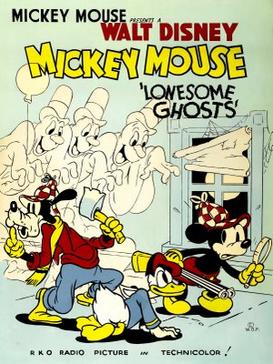
Lonesome Ghosts is a 1937 Disney animated cartoon, released through RKO Radio Pictures on Christmas Eve, three days after Snow White and the Seven Dwarfs (1937). It was directed by Burt Gillett and animated by Izzy (Isadore) Klein, Ed Love, Milt Kahl, Marvin Woodward, Bob Wickersham, Clyde Geronimi, Dick Huemer, Dick Williams, Art Babbitt, and Rex Cox. The short features Mickey Mouse, Donald Duck & Goofy as members of The Ajax Ghost Exterminators. It was the 98th short in the Mickey Mouse film series to be released, and the ninth for that year.
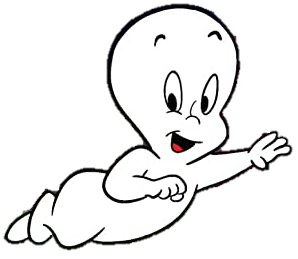
Casper the Friendly Ghost is a fictional character who serves as the protagonist of the Famous Studios theatrical animated cartoon series of the same name. He is a translucent ghost who is pleasant and personable, but often criticized by his three wicked uncles, the Ghostly Trio.
Fright to the Finish is a 1954 animated American short film directed by Seymour Kneitel and Al Eugster starring Jack Mercer as Popeye. The short was released by Paramount Pictures on August 27, 1954.
Jasper Goes Hunting is an animated short film in the Puppetoons series, directed by George Pal and first released on July 29, 1944. The short was distributed by Paramount Pictures.

The Early Worm Gets the Bird is a 1940 Warner Bros. Merrie Melodies cartoon supervised by Tex Avery. The short was released on January 13, 1940. The name is a play on the adage "The early bird gets the worm."

The Haunted House, also known as Haunted House, is a 1929 Mickey Mouse short animated film released by Celebrity Productions, as part of the Mickey Mouse film series. The cartoon was produced by Walt Disney Productions and distributed by Celebrity Productions. It was the fourteenth Mickey Mouse short to be produced, the eleventh of that year.
John Henry and the Inky-Poo is a 1946 stop-motion animation film written and directed by George Pal using Pal's Puppetoons stop-motion style. The film is based on African American folk hero John Henry.
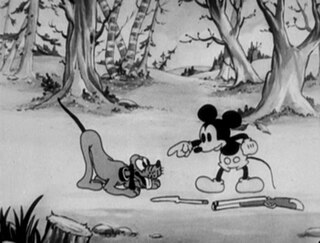
The Moose Hunt is a Mickey Mouse short animated film first released on April 30, 1931, as part of the Mickey Mouse film series. It was the twenty-eighth Mickey Mouse short to be produced and the fourth of that year.
Events in 1944 in animation.
References
- ↑ Lenburg, Jeff (1999). The Encyclopedia of Animated Cartoons. Checkmark Books. pp. 85–86. ISBN 0-8160-3831-7 . Retrieved 6 June 2020.
- ↑ Article title [ dead link ]
- ↑ DataBase, The Big Cartoon. "Jasper And The Haunted House (Paramount Pictures)". Big Cartoon DataBase (BCDB). Archived from the original on July 22, 2012.
- ↑ "Jasper and the Haunted House". 23 October 1942 – via www.imdb.com.
- ↑ Spook
- ↑ Neupert, Richard (2001-09-01). "Trouble in Watermelon Land: George Pal and the Little Jasper Cartoons". Film Quarterly. 55 (1): 14–26. doi:10.1525/fq.2001.55.1.14. ISSN 0015-1386.
- ↑ Lehman, Christopher P. (Summer 2001). "The new Black animated images of 1946". Journal of Popular Film & Television. 29 (2): 74–81. doi:10.1080/01956050109601011. S2CID 191315418.